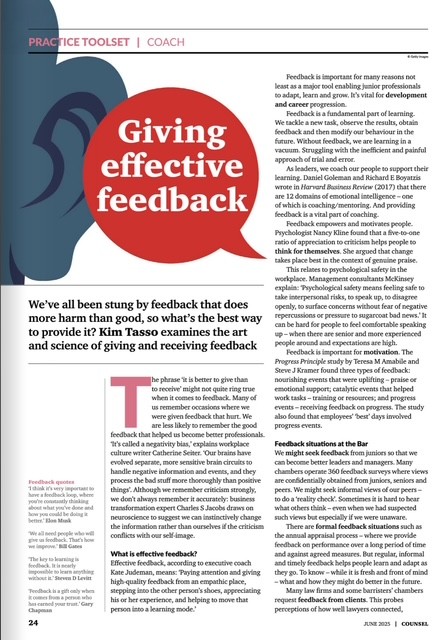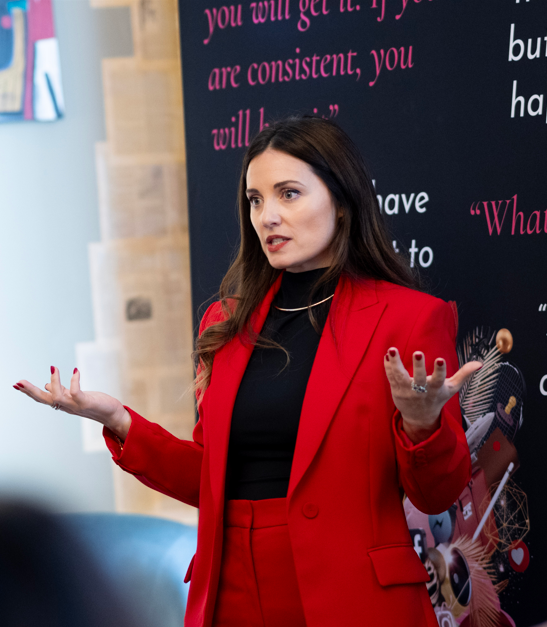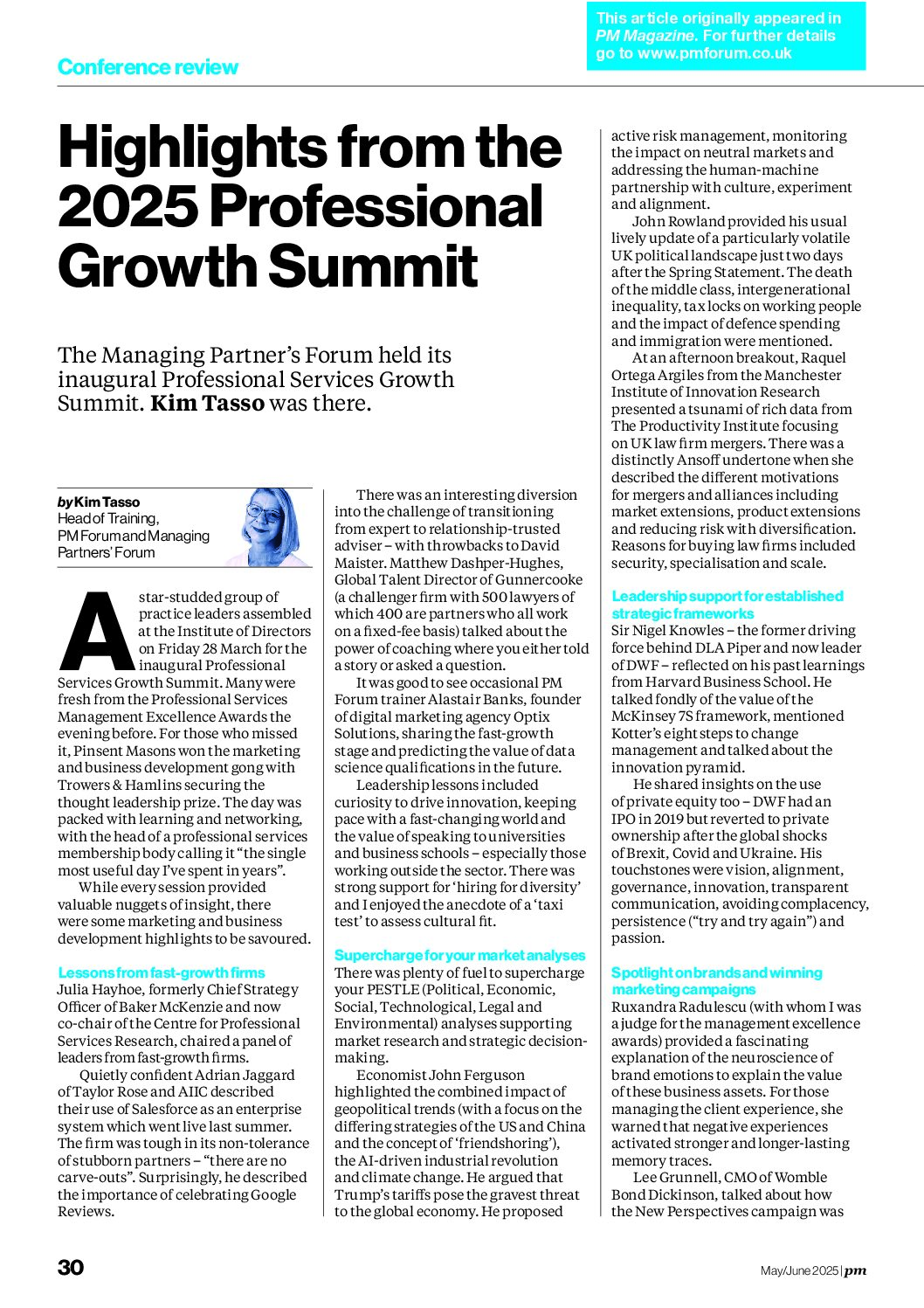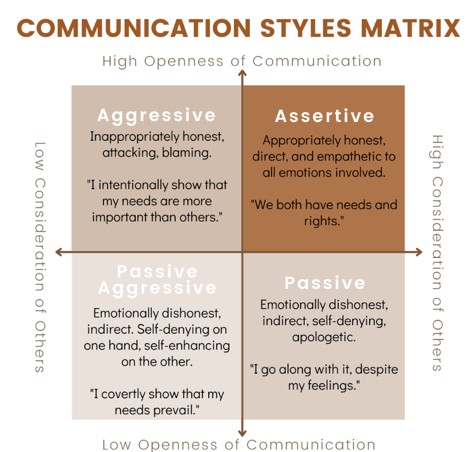
Earlier in November, there was a full house on the Professional Marketing Forum’s half day workshop on Practical and Professional Skills for Marketing and Business Development Assistants. https://www.pmforum.co.uk/training.aspx There were delegates from legal, accountancy, actuarial, property and engineering firms. Here are the six insights from marketing and business development assistants that they felt were most valuable:
1. Goal-setting for professional and personal reasons
There were numerous discussions about the importance of goals. From a business development and marketing perspective we considered how we need to know what people want to achieve in order for us to select the appropriate strategy and mix of activities that would enable them to be achieved.
We also considered the need to have long term goals so that short term goals ensured we were on the right path. (See stepping stones http://kimtasso.com/3-themes-from-marketing-planning-stepping-stones-persuasion-and-momentum/
Having clear goals makes it easier to focus attention on the critical activities so that we achieve the results required. There was a discussion about measurement on the basis of outputs rather than inputs (productivity http://kimtasso.com/productivity-inputs-vs-outputs/) Also, how goals enable us to manage time more effectively (time management http://kimtasso.com/time-management-35-top-tips-and-techniques/)
But goals are also important for career development. As well as considering when you hope to be promoted to a more senior position, we need to think about whether there might be alternative career paths to pursue in the short term. For example, there may be qualifications, skills or experience that you want to acquire in more specialist areas to help you on your way to more senior general management roles. Lateral rather than vertical progression.
2. Managing your personal brand
Perception is reality. We need to critically assess how others perceive us – and whether we are conveying the right image and messages. We can take control of our personal brand – by considering how we are similar and different from others in similar roles. Then we can decide what key messages we would like people to remember us for.
There is more information on developing personal brands here:
http://kimtasso.com/building-personal-brand-key-person-influence-daniel-priestley/
http://kimtasso.com/lessons-leadership-personal-brand-presence-leadership-stages-loneliness/
http://kimtasso.com/personal-or-firm-brand/
http://kimtasso.com/the-power-of-three-in-personal-introductions-brandme/
http://kimtasso.com/make-personal-impact-stand-speak-make-difference/
http://kimtasso.com/be-more-visible-the-pvi-model/
3. The value of face-to-face contact
Face-to-face contact enables personal relationships to develop. Rapport and trust develop more easily when you are interacting with someone real-time. But research shows that people are 34 times more likely to agree to help when asked face-to-face than by email https://hbr.org/2017/04/a-face-to-face-request-is-34-times-more-successful-than-an-email
The book “Reinforcements – how to get people to help you” by Heidi Grant explores techniques to get people to help you more http://kimtasso.com/book-review-reinforcements-how-to-get-people-to-help-you-by-heidi-grant/ .
The importance of face-to-face contact is explored in-depth in my book on “Better Business Relationships” (http://kimtasso.com/publications/better-business-relationships/) and there are blogs on its importance in persuasion http://kimtasso.com/two-big-guns-of-communication-face-time-and-reframe/ and selling http://kimtasso.com/selling-the-importance-of-face-to-face-contact-on-tenders/
4. Developing market, client and product knowledge
We expect the fee-earners we support to learn about marketing and business development so that we can help them.
But we also have to take responsibility for developing our own knowledge of the markets that our firms serve and our clients. As marketers, we are supposed to be focused on anticipating and meeting the needs of clients and we can’t do that unless we understand their environment, market, competitors, business operations and challenges. So we need to devote time to developing this knowledge through research and using the firm’s systems. This will help us build credibility with our fee-earners. It will also help us generate knowledge and insight about markets and clients that will help our fee-earners find opportunities to engage productively with clients.
Similarly, it is hard to promote services which we don’t understand. So we must invest time in developing knowledge of the expertise and services provided by our firms. Obviously, we can’t learn about everything or be as expert as our fee-earners but we can select some services and concentrate on learning about those services, how we work differently from our competitors and what value it brings to our clients.
5. The challenge of partnerships and owner-managers
Marketing in professional services firms is different for a number of reasons.
One of the main differences is the structure of many of the firms. They are partnerships rather than company or corporate structures. Partnerships have a distinct culture, governance structure and decision-making process.
The partners are also owner-managers – they own equity in the business and draw on the profits but they also manage the business. In other corporate structures, there is a separation between the external shareholders of the business and those people managing the business.
Whilst partners being owner-managers can make it difficult to achieve buy-in (there are many blogs on this topic – see, for example, http://kimtasso.com/animal-magic-and-the-art-of-gaining-buy-in-leeds-september-2019/) and change management programmes (see – for example – http://kimtasso.com/dont-try-to-eat-the-white-elephant-whole-thoughts-on-change-management-and-leadership/) there are distinct advantages.
For example, in partnerships the people owning and running the business have day-to-day contact with the clients and markets. They are really in touch. So they have up-to-date and comprehensive knowledge of what’s happening, competitor activity and the emerging needs of clients. So they are more likely to detect trends, shifts and identify new opportunities and threats. This means that as marketers we have to work even harder to develop our knowledge of those market environments if we are to be able to provide ideas and support.
6. The difference between marketing and business development
It’s interesting that there is still confusion – amongst fee-earners and marketing and business development people – on the difference between marketing and business development.
I was writing about this subject long ago (see, for example this post from 2004 http://kimtasso.com/faq/what-is-the-difference-between-marketing-and-business-development/)
My view is that business development includes three linked processes: marketing, selling and relationship development (account management). Many people who have business development roles in the professions do just that – the whole process – from analysing and segmenting the market, conducting research, creating and implementing communications campaigns and then supporting fee-earners through selling (new relationship creation) and relationship management (developing existing clients and referrers).
But many people think that business development is all about new business generation – i.e. selling. But you could argue – when you think about the main areas of marketing – markets, products, pricing, people and promotions that selling is just one tool in the marketing communications or promotions toolbox.
As most professional service firms are selling to other businesses (B2B marketing) the main promotional tools they use are PR (Public Relations), Digital marketing and Personal Selling.
We talked about how another way to think about it is that marketing is about creating awareness and the platform and business development is about creating and nurturing the relationships. Marketers conduct the first process and the fee-earners lead in the latter. In the professions there are rules and traditions that mean fee-earners have to take the lead when it comes to creating and converting relationships with potential clients. And in many firms, marketers and business developers don’t have that direct client contact.
Peter Drucker said “The aim of marketing is to know and understand the customer so well the product or service fits him and sells itself.”









